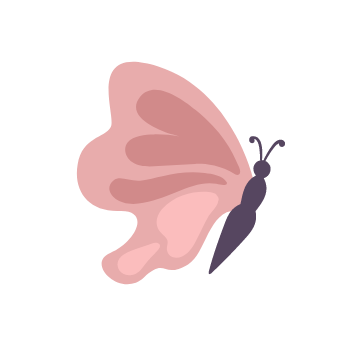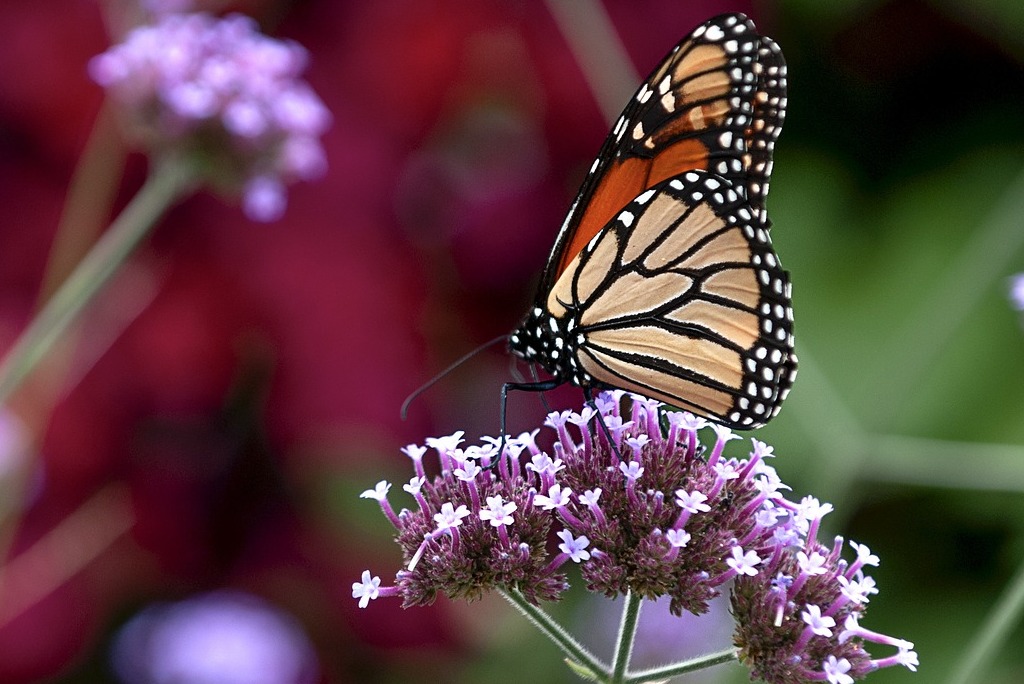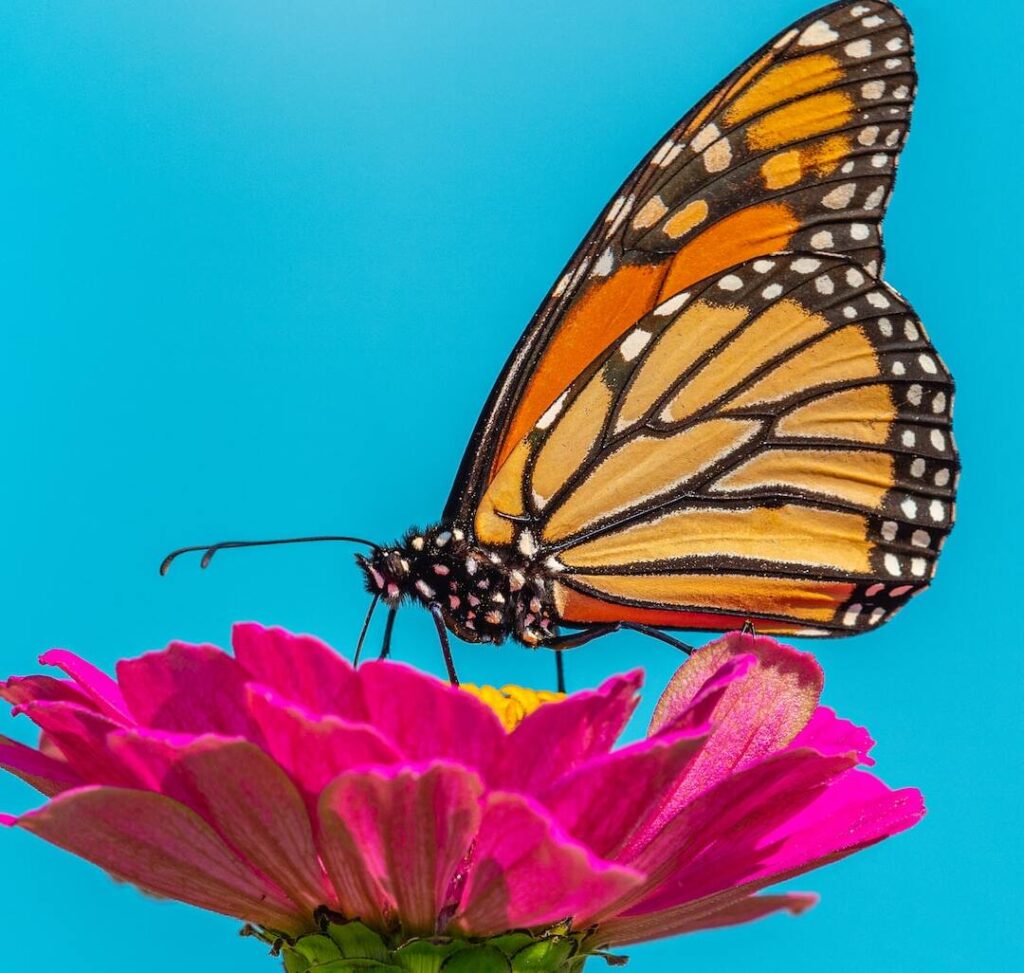Monarch Butterfly Reserve Guidebook
Looking for a monarch butterfly reserve to see the butterfly's spectacle?
Do you want to know when is the monarch butterfly season?
Where does the monarch butterfly come from?
Keep reading our complete monarch butterfly reserve guidebook. Fly on a wonderful adventure with us! 🦋🌳

Contents
When is the monarch butterfly season?
Every winter, between November and March, millions of monarch butterflies dress the forests of central-western Mexico in orange, whitish, and black tones. After traveling thousands of kilometers from Canadian lands, this little flier begins to arrive at the forests of the Mexican states.
For over 40 years, these beautiful creatures have been coming here to reproduce and find their new home. To protect this unique biological phenomenon, the most famous sanctuary called Piedra Herrada, was constructed.
This place is part of the Monarch Butterfly Biosphere Reserve declared a Natural World Heritage Site by UNESCO in 2008. Currently, the reserve covers an area of over 16,100 hectares shared by 10 municipalities in two Mexican states.
🦋 Admire monarch butterflies closely with our tours:
- Monarch Butterfly Tour Mexico (Private Guide & Driver / Private / 12h)
- Mexico Monarch Butterfly (Sanctuary & Christmas / Private / 14h)
Below are the top 5 locations of the monarch butterfly reserve that you can visit.
Note:
Many times the reservation schedules and dates from the sanctuary may vary due to Mexican celebrations, the COVID-19 pandemic, or simply due to external factors on the part of the personnel working on the reserves. Likewise, we recommend that you always bring the following to make your visit to any of the following sanctuaries more comfortable:
- Comfortable travel backpack – check out Dive In post: 15 Best Travel Backpacks of 2023 post for more information
- Comfortable clothing
- Jacket
- Money
1. Sierra Chincua
The Sierra Chincua monarch butterfly reserve is located very close to Angangueo. Here you will find experienced guides who will provide you with information about the flora and fauna of the place.
Monarch butterflies stand out for living around 9 months, much more than others of their kind. To arrive at this sanctuary, you need to hike around 2.5 km. But don’t worry, you will be fully rewarded as along the way you will see numerous breathtaking views. The facilities include a restaurant, a parking lot, and a special camping area.
How to get there?
Departing from Mexico City is approximately a 3-hour drive. It is recommended to travel by bus (you can see departure times to this destination at the Obsertvatorio bus terminal) to Zitacuaro.
Once you arrive in Zitacuaro, ask a taxi to take you to Angangueo, this mini-magical town has butterflies on the poles that will guide you to the Sierra Chincua Sanctuary.
Sierra Chincua monarch butterfly reserve opening hours:
| Monday | 8:00–17:00 |
| Tuesday | 8:00–17:00 |
| Wednesday | 8:00–17:00 |
| Thursday | 8:00–17:00 |
| Friday | 8:00–17:00 |
| Saturday | 8:00–17:00 |
| Sunday | 8:00–17:00 |
Sierra Chincua monarch butterfly reserve entrance cost:
On average, access costs 35 pesos (1.94 USD) with a guide, and to go up on a horse, round trip, the price ranges between 80 pesos (4.43 USD) and 100 pesos (5.54 USD).
2. Santuario Ejido El Capulín
You can reach this sanctuary on Cerro Pelón Mountain on the 4-km hike. The area is full of beautiful landscapes with coniferous forests that attract millions of monarch butterflies to hibernate here every year.
Here you will find horse rentals, tables for family meals, and typical snack stores. Cabins to stay in are available at affordable costs, perfect to be close to nature. El Capulín is located in the municipality of Donato Guerra, 80 km west of the city of Toluca.
How to get there?
Departing from Mexico City, this place is approximately 2 hours and 30 minutes away. As in Sierra Chincua, the best way to get to Zitacuaro is to leave from the Poniente bus terminal (Observatorio).
For the visit to the sanctuary, it is best to rent a taxi from Zitacuaro and in 30 minutes you will be at the sanctuary enjoying the monarch butterflies.
Ejido el Capulín monarch butterfly reserve opening hours:
| Monday | 9:00–17:00 |
| Tuesday | 9:00–17:00 |
| Wednesday | 9:00–17:00 |
| Thursday | 9:00–17:00 |
| Friday | 9:00–17:00 |
| Saturday | 9:00–17:00 |
| Sunday | 9:00–17:00 |
Ejido el Capulín monarch butterfly reserve entrance cost:
Fees vary, but general admission is $80 per person. If you want to guide or rent a horse, these rates may go up. Beware of scammers and go with a guide you trust.
3. El Rosario
El Rosario is one of the most beautiful sanctuaries of the Monarch butterfly. This reserve will take you through the interior of a dense mixed forest of pine and fir.
The hills are home to millions of Monarch butterflies in their thick trunks and leafy branches, which each year make these trees their home. To reach this site, you need to ascend the mountain for approximately 2 kilometers. You can do it either on foot or on horseback.
Also, we recommend hiring a local guide. Except for getting to the exact place where butterflies live, you will learn about their characteristics and other curious information. This is the largest monarch butterfly reserve in Mexico so you will not regret it.
How to get there?
The distance between Mexico City and El Rosario Sanctuary is 3 hours. Practically, you have to follow the steps we mentioned to get to Sierra Chincua.
The only difference is that when you get to Angangueo, ask a cab to take you to this shrine that is a little further ahead of Sierra Chincua.
El Rosario monarch butterfly reserve opening hours:
| Monday | 8:00–17:00 |
| Tuesday | 8:00–17:00 |
| Wednesday | 8:00–17:00 |
| Thursday | 8:00–17:00 |
| Friday | 8:00–17:00 |
| Saturday | 8:00–17:00 |
| Sunday | 8:00–17:00 |
El Rosario monarch butterfly reserve entrance cost:
The entrance fee to this sanctuary is $80 pesos (4.43 USD) for Adults – $50 pesos (2.77 USD) for Children.
4. Santuario Piedra Herrada
To get to the sanctuary, one has to walk for 40 min up the slope of the Nevado de Toluca volcano. The landscape there consists of imposing mountains of more than 3,000 meters in altitude.
Butterflies are attracted by oyamels, a local species of pine trees. Those play an important role in providing them with the necessary conditions to grow and reproduce.
How to get there?
It is the closest sanctuary to Mexico City since it is only 1 hour and 59 minutes away and can be reached from Mexico City or Valle de Bravo.
If you choose to travel by car, take the Toluca highway to Temascaltepec, then turn off towards Valle de Bravo and you will find the road to Piedra Herrada.
Piedra Herrada monarch butterfly reserve opening hours:
| Monday | 9:00–16:00 |
| Tuesday | 9:00–16:00 |
| Wednesday | 9:00–16:00 |
| Thursday | 9:00–16:00 |
| Friday | 9:00–16:00 |
| Saturday | 9:00–16:00 |
| Sunday | 9:00–16:00 |
Piedra Herrada monarch butterfly reserve entrance cost:
Admission to the sanctuary is 100 pesos (5.53 USD) for adults and 70 pesos (3.87 USD) for children, if you want to rent a horse it costs 300 pesos (16.59 USD).
5. Santuario La Mesa
Located at the foot of the mountains that separate Michoacan and the State of Mexico, this sanctuary is home to thousands of monarch butterflies in winter. There is a tourist hostel with cabins, restaurants, viewpoints, and trails ideal for biking. Furthermore, you can rent horses and hire local guides to get to the place where butterflies stay.
How to get there?
This sanctuary is also one of the closest to Mexico City. If you travel by bus from Mexico City, it is best to leave from the Poniente Bus Terminal (Observatorio).
Take the bus to Villa Victoria and San Jose del Rincon. At Guadalupe stop (parada de Guadalupe) board a local taxi that will take you to the sanctuary.
La Mesa monarch butterfly reserve opening hours:
| Monday | 9:00–17:00 |
| Tuesday | 9:00–17:00 |
| Wednesday | 9:00–17:00 |
| Thursday | 9:00–17:00 |
| Friday | 9:00–17:00 |
| Saturday | 9:00–17:00 |
| Sunday | 9:00–17:00 |
La Mesa monarch butterfly reserve entrance cost:
The entrance fee for this sanctuary is $50 pesos (2.77 USD) and it is the perfect place for nature lovers. In addition, there is a deer hatchery inside the sanctuary which is perfect for kids too.
More about Monarch Butterflies
One of the main reasons for this annual trip is that monarchs are extremely vulnerable to climate change because temperature sets the tone for their reproduction. A drastic change breaks their life cycles.
On the way, to the oyamel forests, three generations of monarchs are born and die. Once born in Mexico, they undertake their return to the United States once winter is over.
Alongside this information, some people are not pretty sure if Michoacan or its surroundings are a good option to travel to due to the insecurity of Mexico. Nevertheless, in this country, there are many contrasts and not only negativity. For example, I will cite the article by Partyingtraveler:
“Seeing millions of monarchs fluttering about is something that I hope everyone can experience in their lifetime. Of all the things I’ve seen in my travels, witnessing the monarch butterfly migration in Mexico has nothing else I could compare it to”.
Another important note for you to take into account is the next one: for butterflies to also enjoy their stay in Mexico, you should not touch or disturb them, but rather appreciate them in silence and with respect. If you are going to travel as a family, it is an excellent opportunity to teach the little ones to respect all the species of nature.
Informative video
Let us know in the comment section if we were missing one monarch butterfly reserve and which one would you like to visit the most!









